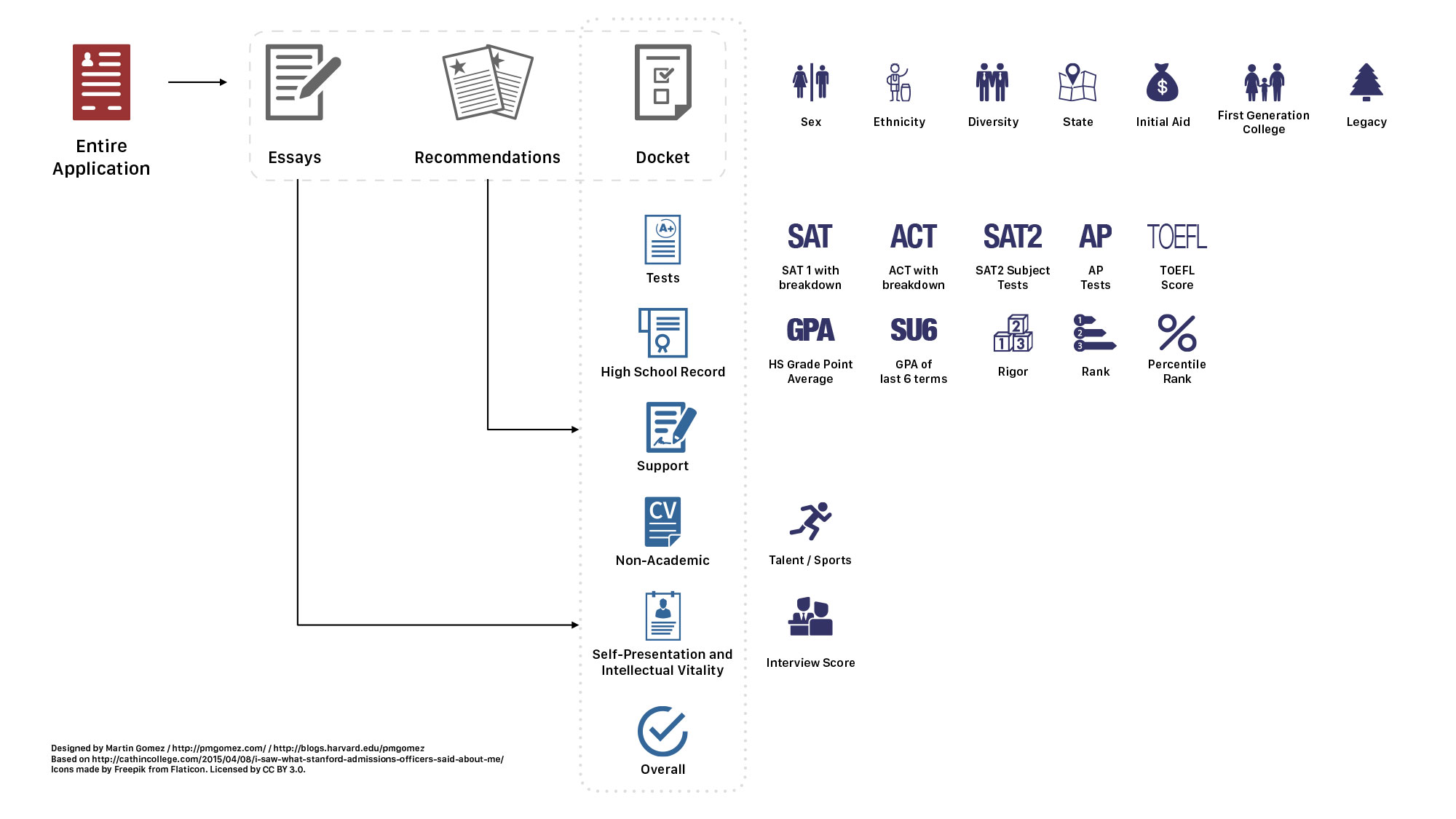In less than 24 hours, many of the colleges and universities in the U.S. will be closing their application systems for Regular Decision (RD) applicants to their undergraduate programs. Their admissions offices will then begin their closed-door process of evaluating applicants. Decisions, usually communicated in March and April, are either Accepted/Admitted, Denied, or Waitlisted. These decisions are rather familiar for Early Decision/Action applicants, where Waitlisted is replaced with Deferred to RD.
Harvard, Columbia, Yale, Princeton, Penn, UC Berkeley, Stanford, MIT, and others have all published information on their websites as to the kind of prospective students they’re looking for.
Bloomberg Business has an episode on how decisions are made at Amherst College –
The Today Show also discusses the process in detail –
There is also an extensive discussion on this topic on Quora. Then again, the process described was from the 80s, even if it was featured on TIME mid last year.
Now, what we want is to see what admissions folks look for and note down on each application in recent times. Fortunately, because of the Family Educational Rights and Privacy Act, all matriculated students to U.S. colleges and universities can now review their admissions packages. The New York Times featured an article on this January of last year, thanks to the work of The Fountain Hopper. Cath Goetze of the Stanford Class of 2018 did just that and went through the process! Her extensive blog post about it details what admissions officers jot down, and how they rate each applicant. There exists a rate card where scores are assigned to various components.
To make what she discovered more digestible, I thought I’d make a graphic out of it.
An applicant’s entire application is composed of essays, recommendations, and a docket. The docket contains components that are categorized into the items in cornflower blue. These components, in midnight blue, are each assigned a score. Decisions on the applicant are based on these.
A PDF of the above may also be downloaded for printing and for reference of college counselors.
Note that while the above is for Stanford, other colleges and universities are known to use a similar process given the amount of applications they receive each year.
The admissions process to UK, Canadian, Hong Kong, Singapore and Australian universities would be different but that’s for another post.
If you’re applying, all the best! 🙂
![]() This work is licensed under a Creative Commons Attribution 4.0 International License.
This work is licensed under a Creative Commons Attribution 4.0 International License.



Hope
all the best to those applying.